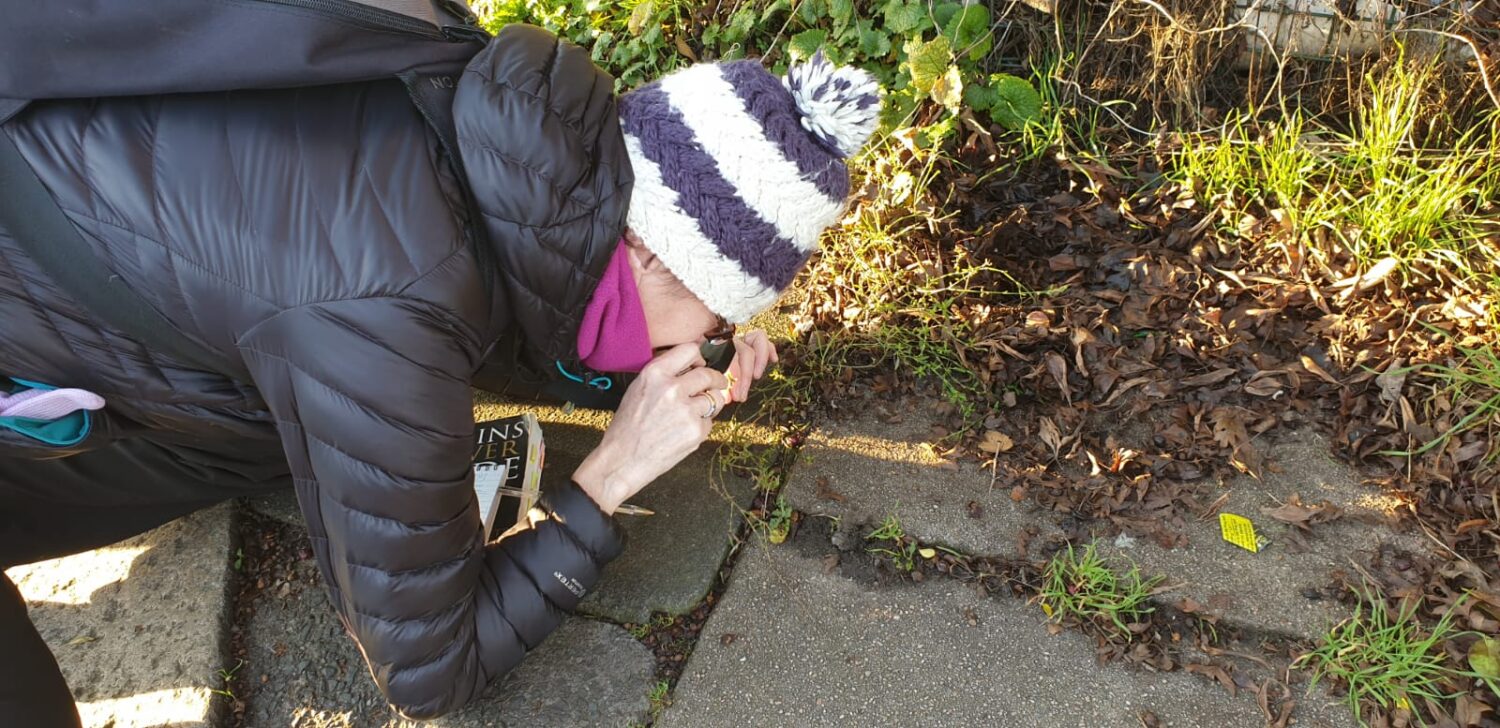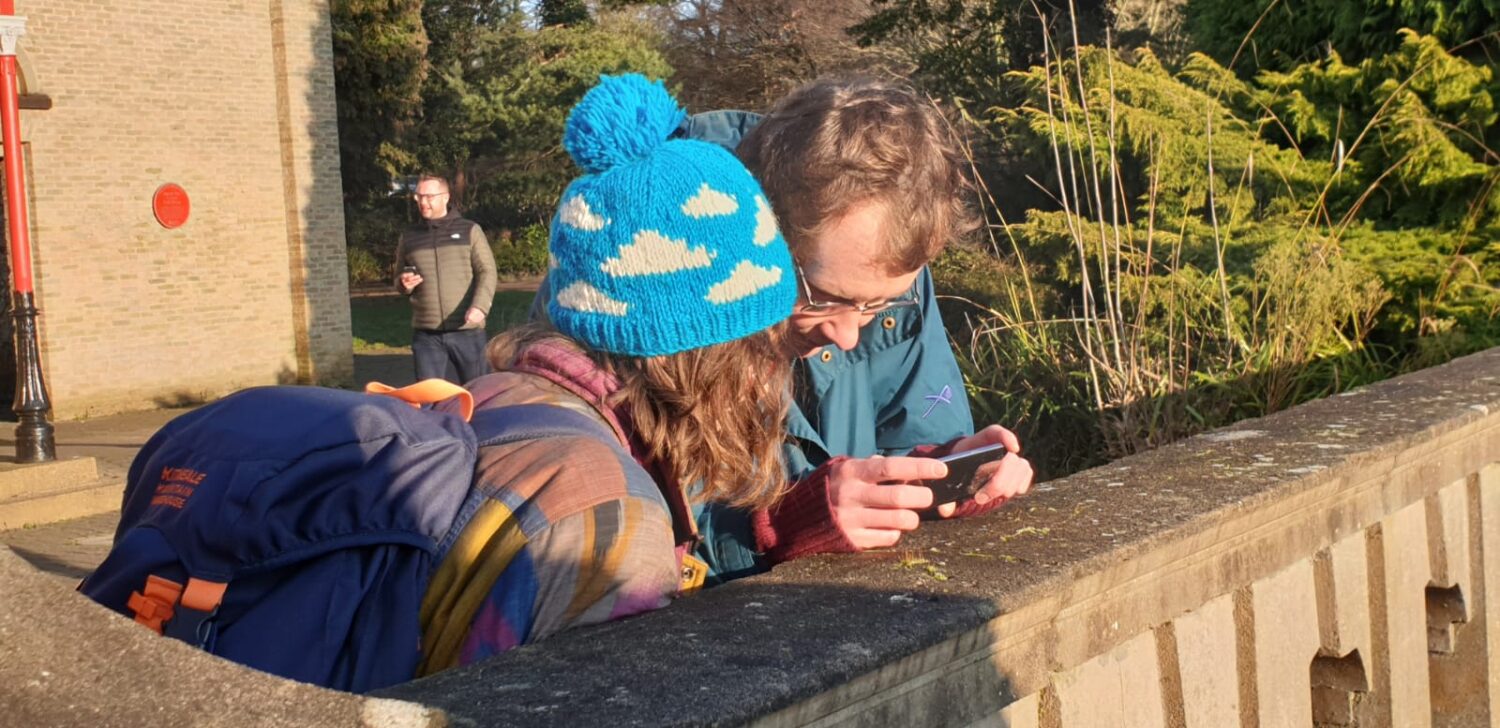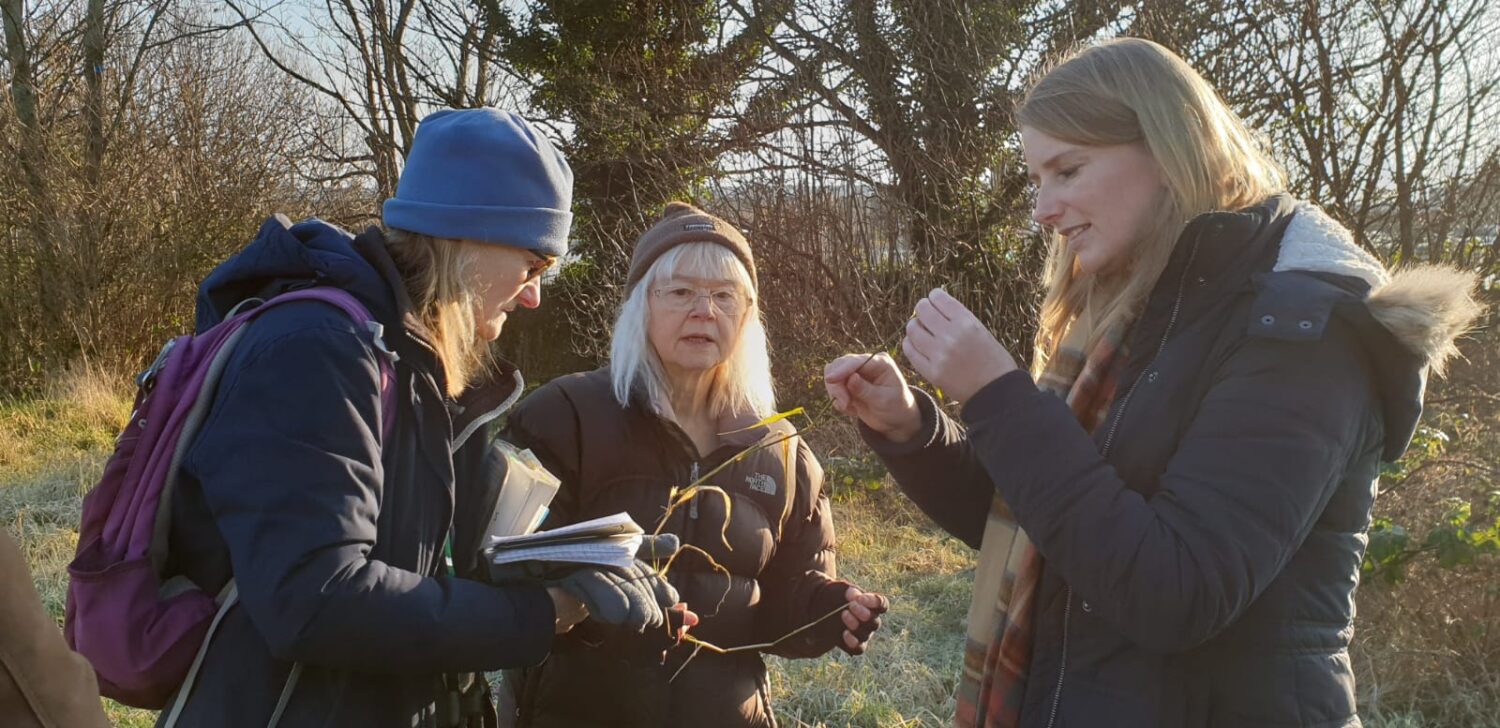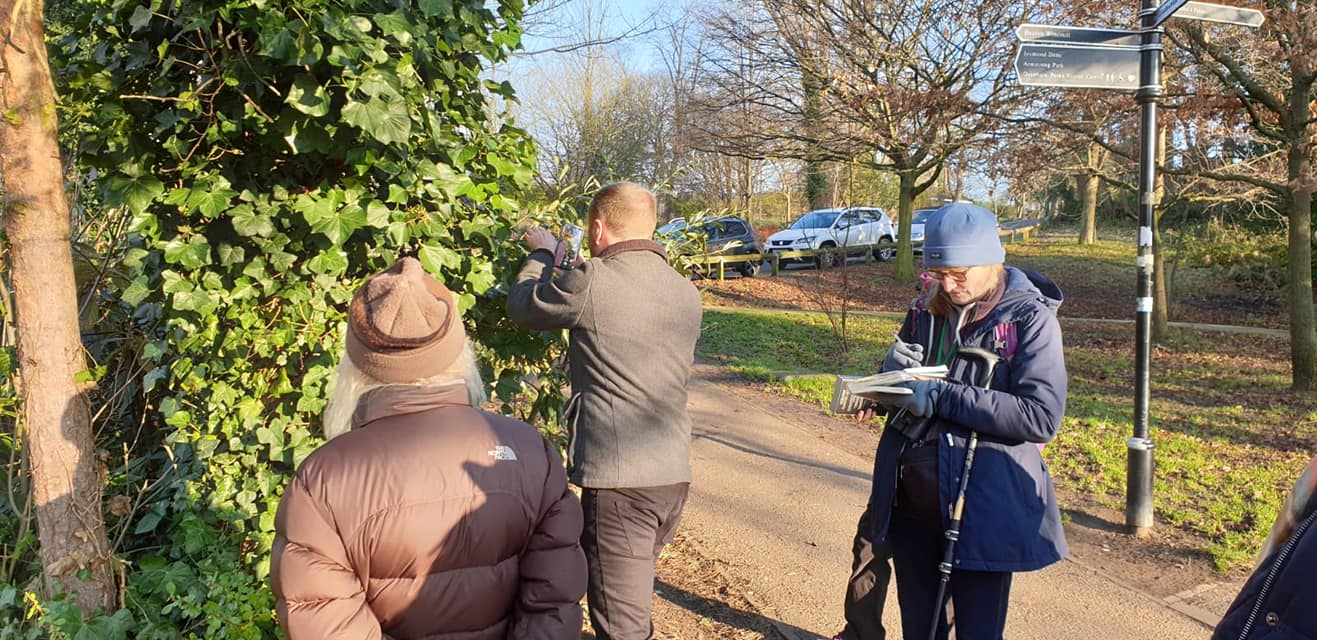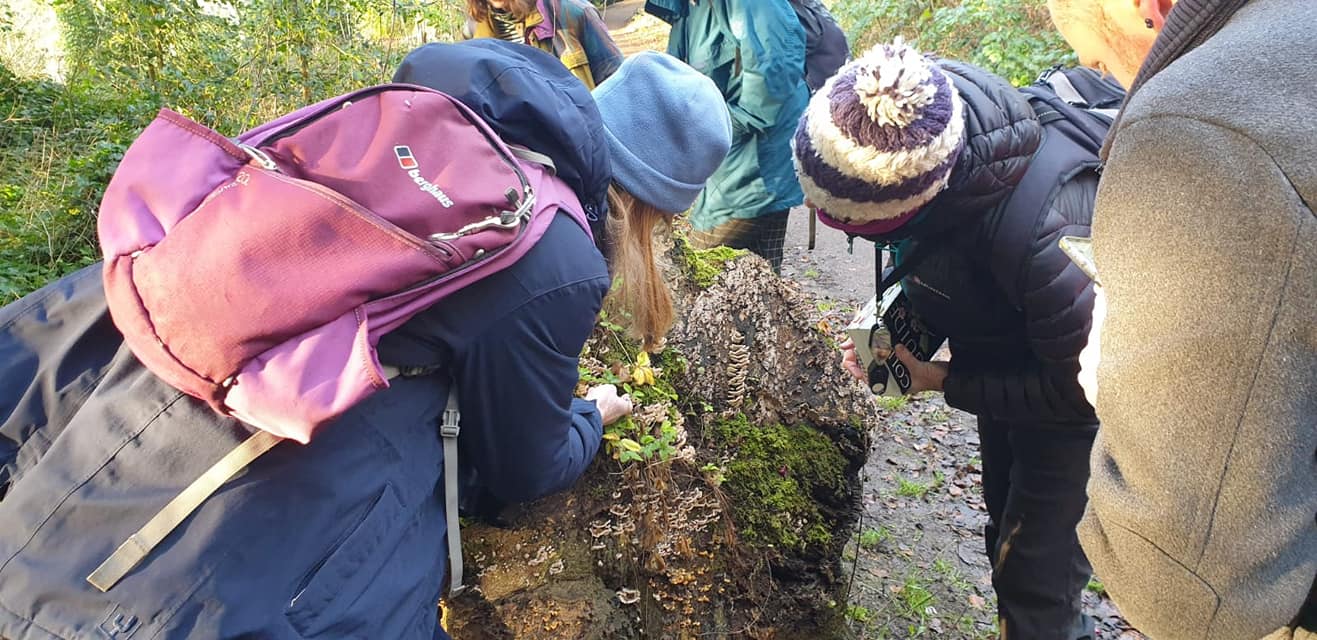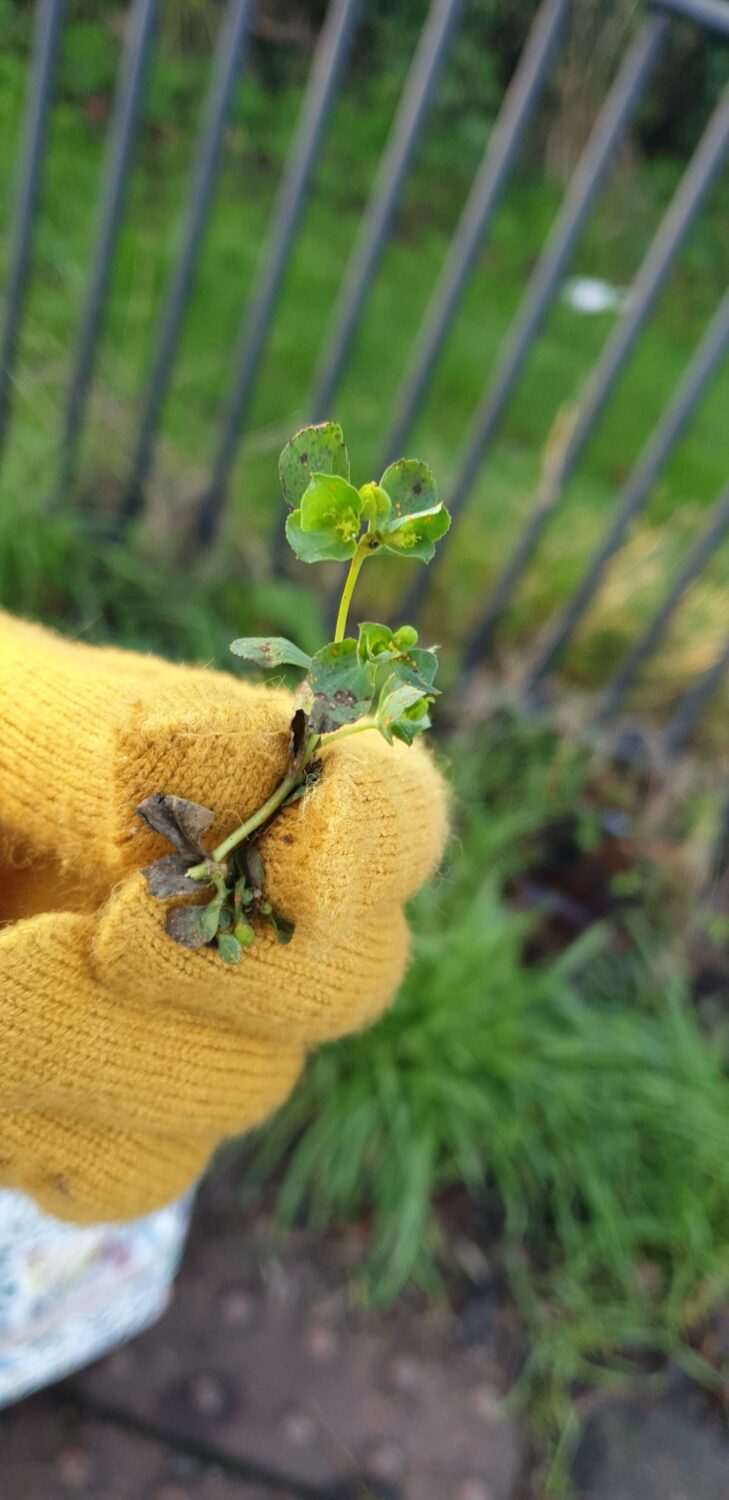The Botanical Society of Britain and Ireland’s (BSBI) New Year Plant Hunt is an annual event in which botanists, expert and amateur alike, head out to record the plant species bucking the trend to bloom in the depths of winter. Having now surpassed its ninth year, the four-day survey is both an enjoyable way to spend a winters day, and an important means by which to assess how changing weather patterns are altering the behaviour of our wildflowers.
Given the interest of many NHSN members in all things botanical, as part of the 2020 plant hunt, we wanted to go one step further than merely encouraging participation. As such, we opted to trial a national first: one which would see two teams of Northumbrian plant-hunters go head-to-head in an attempt to record the highest number of flowering plants in a three hour period on New Year’s Day. Chris Metherell, BSBI County Recorder for North Northumberland, expert botanist and (until last month) BSBI President led a team on Holy Island; while amateur botanist and NHSN Communications Officer, James Common, led an event in Heaton.
Urban or rural, inland or coastal, which team would triumph? Well, neither it turns out, with the event culminating in a friendly draw. Both teams managed an impressive feat of recording 40 species in bloom on their respective surveys – a significant total for Lindisfarne, in particular, where conditions are less hospitable than those in the relative warmth of the city. A huge well did to both teams for their plant hunting efforts, and to those who came along and helped on the day. We hope to contribute again to the New Year Plant Hunt but, for now, here are two short accounts right from the horses’ mouths:
Setting out on New Years Day, and with 13 people in attendance, it immediately became apparent that non-native species would form a cornerstone of our collective, botanical haul. Indeed, the streets of Heaton revealed a kaleidoscopic mix of aliens. Red Valarian, Oxford Ragwort and the star-shaped blue heads of Trailing Bellflower conspicuous against the greys and browns of concrete. Looking closer, other colonists became apparent also: Canadian and Mexican Fleabane, Yellow Corydalis and Snapdragon. Later in the walk, Pru, a member of our group, also pointed out another invasive, Mock Strawberry, a yellow flowering native of South Asia. Newcastle, it seems, like a great many of our cities represents somewhat of a botanical United Nations, boasting species from almost all corners of the globe.
Of course, native species also featured as part of our foray. Mainly the tenacious ‘weeds’ that are widely known to persevere throughout the winter months: Shepard’s Purse, Groundsel, Hogweed, Feverfew and the omnipresent Annual Meadow Grass. That said, it was surprising to find the delicate white blooms of Wild Strawberry clinging on in the relative shelter of Jesmond Dene and the minute, octopus-like female flowers of Hazel greatly brightened up our morning.
JAMES COMMON, NHSN COMMUNICATIONS AND ENGAGEMENT OFFICER
We met on the green and had 15 plant species in our pocket within the first 50 yards, having carefully examined the weedy flowerbeds outside the Lindisfarne Mead factory. These finds included F. densiflora – a rather odd place for it, growing in the gravel next to the car park! We then set off down to the coast at St Cuthbert’s Island for Sea Mayweed and a very early flowering A. petiolata – surely not a hangover from last new year. It was nice to also see a huge plant of Hyosycamus niger – not flowering of course but had clearly done well last year. Next, it was up onto the Heugh for T. arvense, two sorts of Buttercup (some good learning points there) and as expected, Sea Campion. A route which took us past the harbour, which proved rather dull, then back to the green with C. muralis etc on the way, plus a special detour for Mexican Fleabane and Adria Bellflower which I had spotted earlier in the day.
CHRIS METHERELL, NHSN TRUSTEE AND VICE-COUNTY RECORDER FOR NORTH NORTHUMBERLAND
